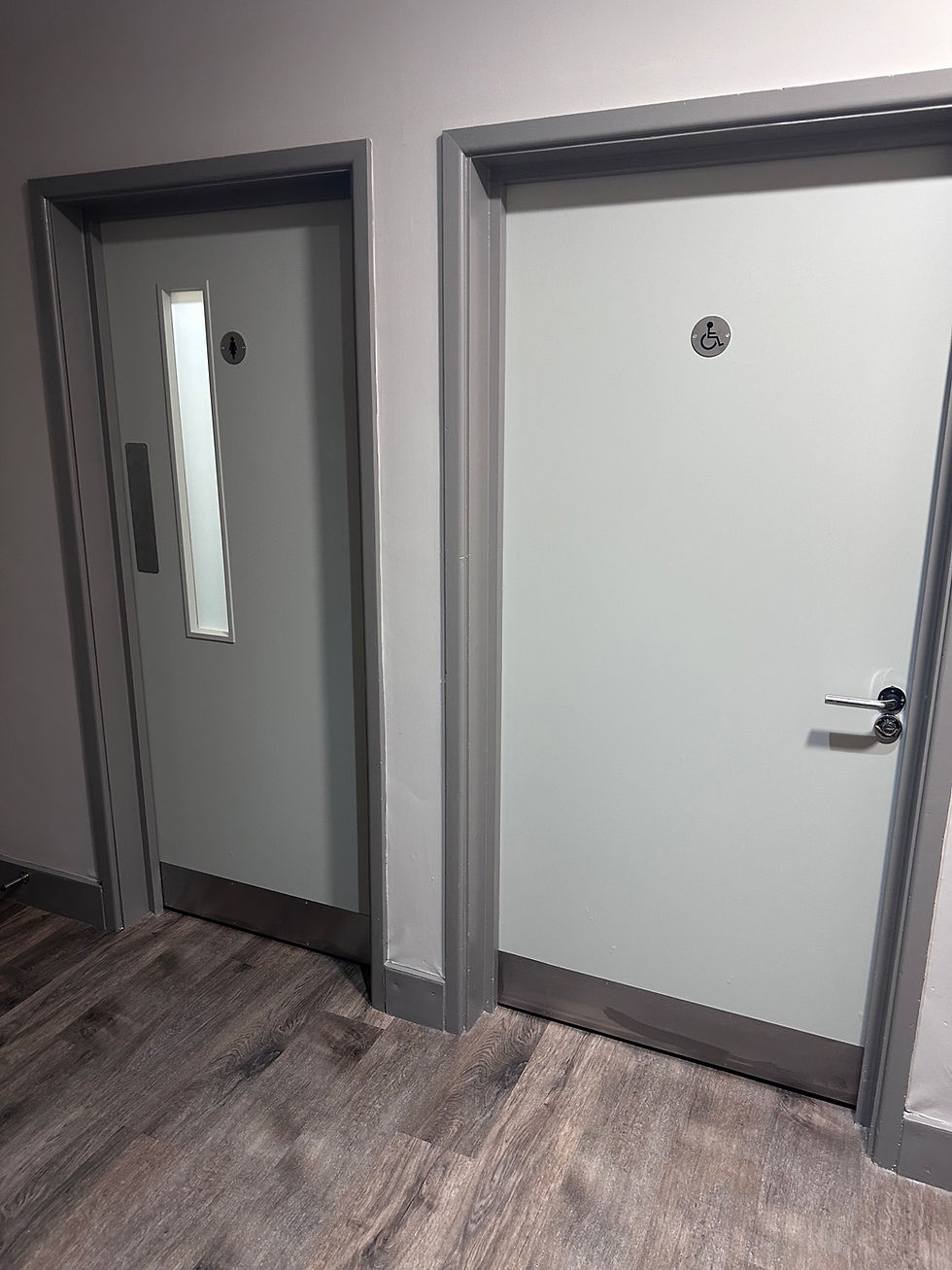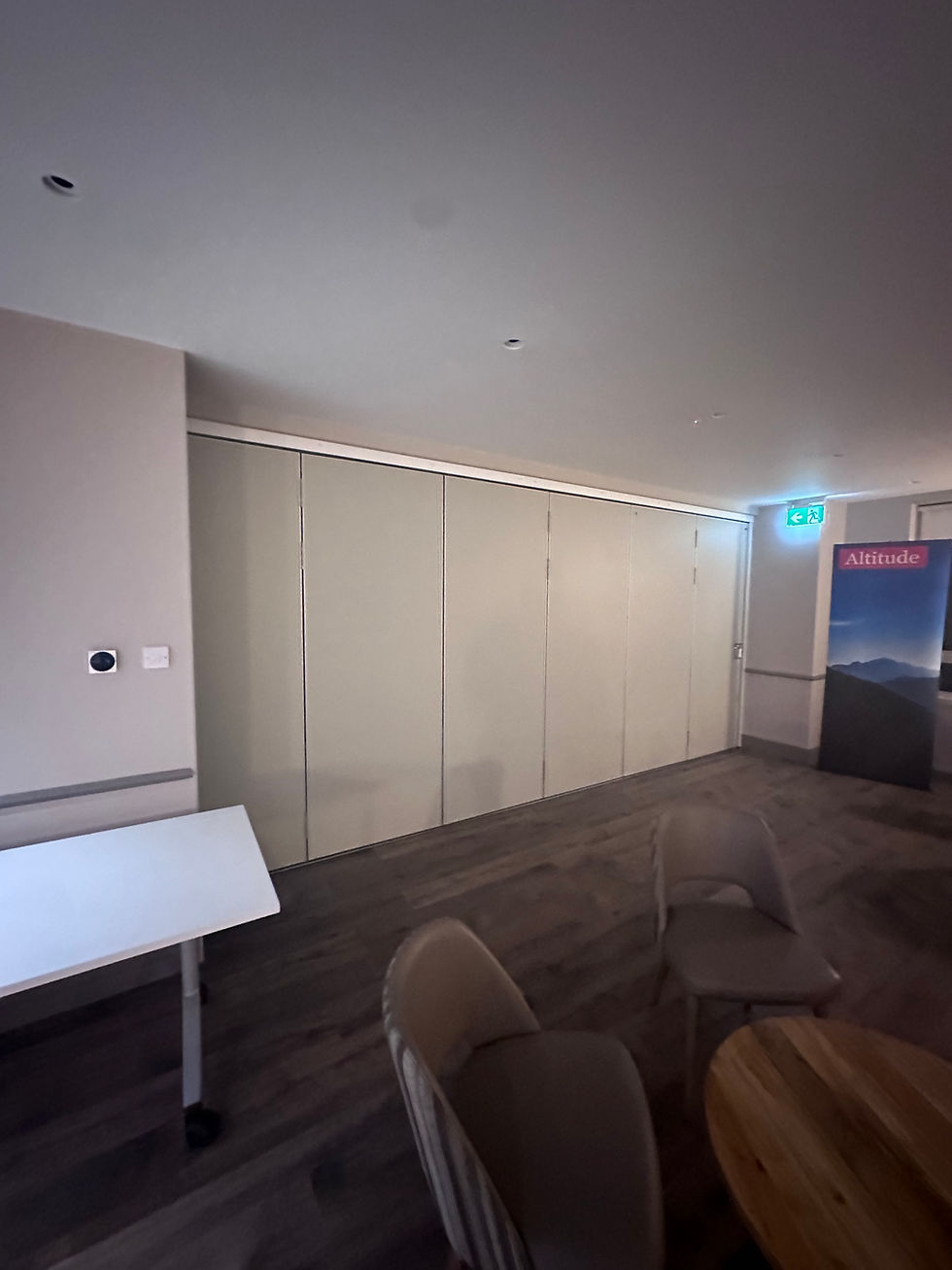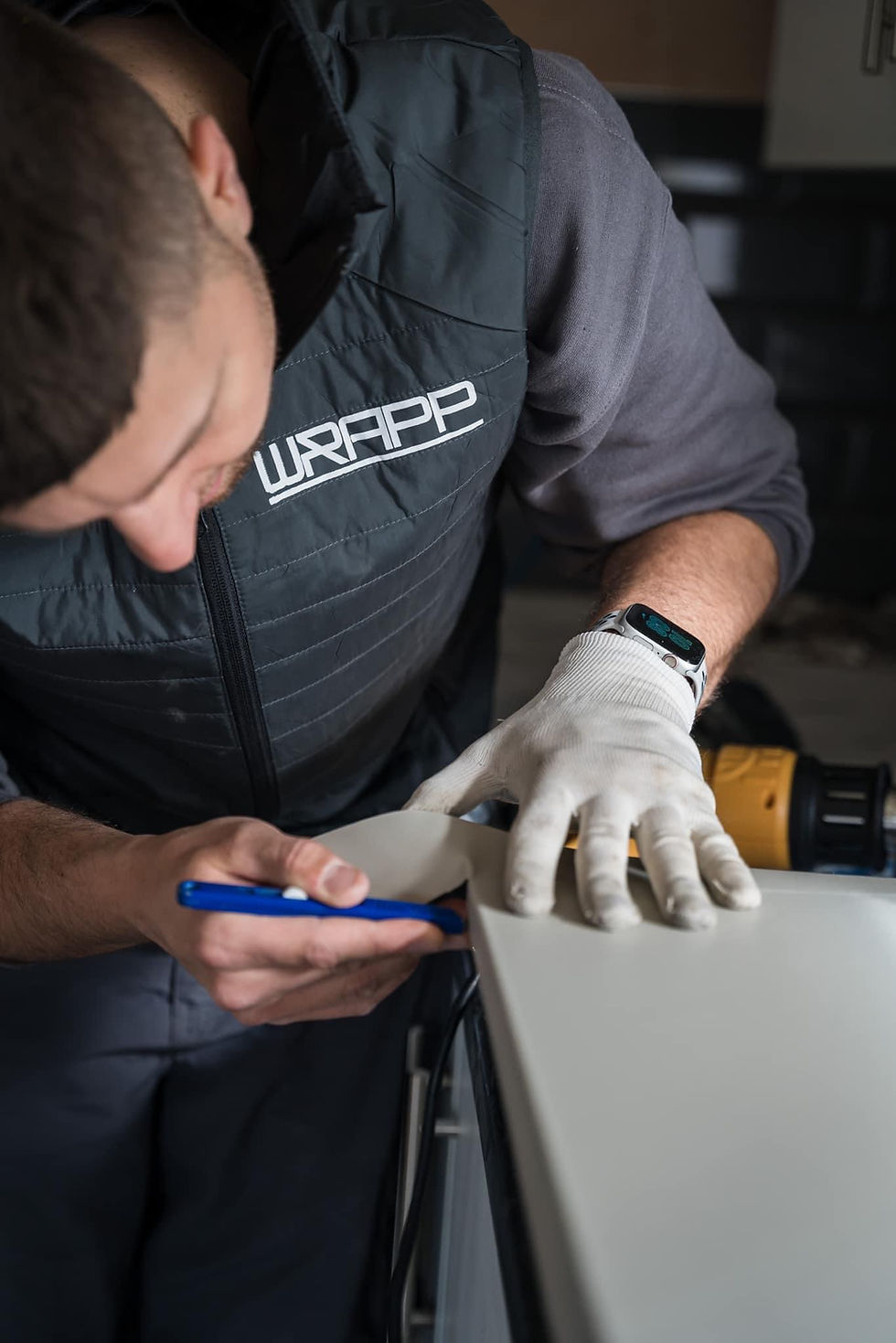How Wrapp Saved a Hotel Over $100K in Renovation Costs Using Architectural Vinyl Wrap
- Ed Stevenson
- Aug 8
- 3 min read
Introduction
Hotel renovations are often necessary to maintain a fresh, modern guest experience—but they can come with staggering costs and prolonged downtimes. One hotel faced this exact challenge when it planned to renovate key guest facilities. While traditional renovation methods were initially considered, the project took a strategic turn by opting for architectural vinyl wrap, a cutting-edge alternative that offers both cost savings and aesthetic appeal.
In this post, we’ll explore how this renovation project was completed using architectural vinyl wrap, the significant cost savings it delivered, and why this material is gaining popularity in the hospitality sector.
The Project Overview
The renovation focused on 16 toilet cubicles, accompanying vanity units, and surrounding wall panels across several guest-accessible areas. The hotel, a mid-size property with a reputation for comfort and cleanliness, had aging finishes that no longer aligned with its brand or guest expectations.
Initial projections for a traditional renovation—using new tiles, paneling, carpentry, and labor-intensive installation—suggested a budget exceeding expectations. This prompted the team to explore alternative solutions that could meet design and durability needs without breaking the bank.
Architectural Vinyl Wrap: The Solution
Architectural vinyl wrap is a durable, adhesive-backed film designed to cover and transform surfaces such as wood, metal, laminate, and more. It's available in a wide variety of textures and finishes—from realistic wood grain and stone to sleek metallics and modern matte colors.
Installation involves thoroughly cleaning the surface, applying the wrap with precision tools, and sealing it for a long-lasting finish. Compared to tearing out old fixtures and installing new ones, vinyl wrap offers a non-invasive, flexible solution with little disruption to operations.
In contrast to traditional materials like tile or laminate paneling, vinyl wrap requires less labor, generates minimal waste, and significantly reduces renovation timelines—without sacrificing visual impact.




Cost Savings Achieved
Initially, the renovation was projected to cost over $150,000 using conventional methods. However, after switching to architectural vinyl wrap, the total cost came in at just under $50,000—a remarkable $100,000 in savings.
These savings can be reinvested in other critical hotel operations, from enhancing guest services to upgrading digital systems or expanding marketing efforts. Most importantly, the project demonstrated that cost-efficiency doesn't have to compromise quality or aesthetics.
Efficiency and Time Savings
One of the most compelling benefits of vinyl wrap is installation speed. Unlike traditional renovations, which can take weeks and often require shutting down parts of the facility, vinyl wrapping was completed in a matter of days per area.
This meant minimal downtime, uninterrupted guest access, and no loss in revenue due to closures. Facility managers also appreciated the clean installation process, which didn’t require heavy demolition or messy construction work.
Environmental Considerations
Sustainability is more than a trend—it’s an operational priority. Vinyl wrap significantly reduces the environmental impact of renovations by eliminating the need to discard existing fixtures and reducing construction waste.
With less debris and fewer materials to transport and dispose of, the carbon footprint of this renovation was substantially lower than that of a traditional approach. As hotels increasingly commit to greener practices, solutions like vinyl wrap align with corporate sustainability goals and responsible facility management.
Case Studies and Success Stories
This hotel’s success is not unique. Across the hospitality industry, facility managers are turning to architectural vinyl wrap for efficient, stylish renovations. From boutique hotels to large chains, similar projects have shown excellent results—both in terms of guest feedback and long-term durability.
Case studies from office buildings, hospitals, and retail environments also demonstrate the versatility of vinyl wrap. Testimonials often cite ease of application, long-lasting finishes, and dramatic visual transformations at a fraction of the expected cost.
Customer Satisfaction and Aesthetics
Guest experience remains the cornerstone of hotel success. In post-renovation surveys, guests praised the refreshed appearance of the restrooms, noting their clean, modern design. Many assumed the hotel had invested in full fixture replacements—testament to the quality and realism of the wrap finish.
Maintaining a contemporary look not only enhances guest satisfaction but also supports brand consistency and competitive edge in a crowded market.
Conclusion
This hotel’s renovation project showcases how innovative materials like architectural vinyl wrap can deliver stunning results, significant cost savings, and reduced environmental impact—all without disrupting daily operations.
For facility managers seeking smart, sustainable renovation strategies, architectural vinyl wrap offers a powerful alternative to traditional methods. It’s time to rethink what’s possible with modern surface solutions.
Ready to explore how vinyl wrap could transform your next renovation project? Contact us for more information or to schedule a consultation.






Comments